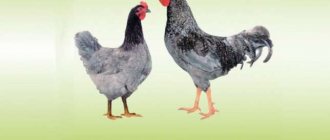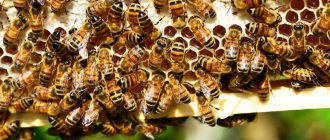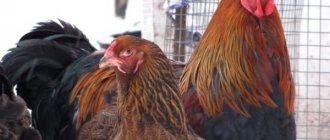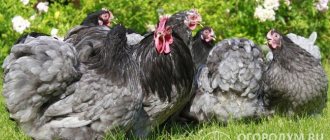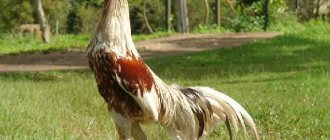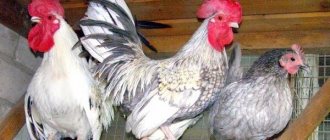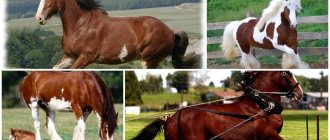Chickens with snow-white plumage have always enjoyed special favor among poultry farmers. This is explained by the beautiful appearance of the birds, but it is not only that. Most birds with this color have proven themselves to be good layers. Beginner farmers are interested in white chickens - what breed is it, what is it called, what does it look like? They want to start breeding poultry to get a lot of eggs. In fact, there are many breeds of chickens with a white color - most of them belong to the egg type, the rest belong to the meat-egg or meat type.
White Leghorn
Breeds
Today, there are a huge variety of egg breeds, among which there are both natural species and artificially bred varieties obtained as a result of breeding work. Below is a rating of the best egg-laying breeds, which are profitable to keep not only in large poultry complexes, but also in households.
Leghorn
This breed of chicken is perhaps the most popular and is actively used for industrial poultry farming. The birthplace of the breed is Italy, where, in the vicinity of the city of Livorno, American breeders conducted experiments on crossing Italian chickens with laying hens from Japan and Spain. The result of painstaking work was the creation of a new highly productive breed of chickens capable of producing up to 300 eggs per year. Leghorns reach sexual maturity very early, and they are able to lay their first egg at the age of 4 months. Both hens and roosters have a light build, a large leaf-shaped comb and a long, curved neck. The plumage is most often white, but sometimes blue, fawn and speckled individuals are found. The cost of hatching eggs is 30-40 rubles, one-month-old chickens will cost 250 rubles per head, and 5-month-old chicks will cost about 500 rubles.
Russian white
This domestic breed is perfectly adapted to the local climate and Russian feed, and does not cause any difficulties when growing. Many experts recommend keeping Russian white chickens as your first stock. The breed is the result of selection, which was carried out with the participation of white Leghorns and local breeds. As a result, we managed to obtain a fairly large egg-laying bird, capable of laying eggs from the age of 5 months and producing up to 260 eggs per year. The main advantage of the breed is its stable productivity, which does not decrease due to extreme heat or lack of feed, and its absolute unpretentiousness in maintenance. In addition, chickens have a very peaceful character and get along well with other residents of the poultry yard. The cost of chickens ranges from 30 to 100 rubles and depends on the value of the parent stock.
Loman Brown
This cross is considered the most popular in Europe. It is characterized by simple content and high productivity. The breed was bred in Germany, and birds of the Rhode Island and Plymouth rock breeds were taken as parent individuals. Egg production begins at the age of 135 days and reaches its peak at 180 days. During the first year and a half, a laying hen is capable of laying up to 330 eggs per year, after which productivity decreases slightly and remains within the range of 250-280 eggs. Among the advantages of the breed, one can note the low consumption of feed, and among the disadvantages is the impossibility of producing offspring naturally. However, this problem is common to most hybrids, which does not make them any less popular. The cost of a hatching egg from a breeding station is 40 rubles, and a 2-month-old chicken will cost 150-200 rubles.
Isa Brown
This hybrid cross is characterized by high egg production and was obtained from crossing Leghorns and Rhode Islands. The homeland of the species is Holland, from where it very quickly spread first throughout Europe and then throughout the world. During the first year of life, the productivity is more than 370 eggs, which allows you to get a fresh egg literally every day. However, by the age of one and a half years, egg production drops somewhat, but for a long time it remains at the level of 200-250 pieces. According to most experts, this cross has a close relationship between nutritional balance and performance, which can be attributed to both pros and cons. The cost of hatching eggs ranges from 40 rubles, and for an adult 5-month-old egg you will have to pay at least 500.
Dominant
This cross is economically profitable and belongs to the universal breeds. The egg production of an adult at the peak of productivity is at least 300 eggs per year. The birds are distinguished by their large build and beautiful multi-colored colors. Based on the color of feathers, there are 12 varieties, of which the most popular in our country are black and blue, as well as Sussex. The weight of an adult chicken reaches 2.5 kg, a rooster - 2.8 kg. The cost of a hatching egg is 40 rubles, and for a 4-month-old pullet you will have to pay about 550 rubles.
Analogs
There are some other breeds that are somewhat similar to Jersey Giant chickens. For example, the breed of chicken is Australorp black. These chickens are quite large, they have a wide and long back, a large and deep chest. Some individuals can reach significant weight.
Australorps lay eggs well, on average 180 eggs per year (sometimes more than 200-250). The eggs are quite large, weigh 60 g, and are brown in color. Black Australorps are similar in appearance to Jersey giants, but for the most part are still smaller in size.
Indian fighting chickens were specially bred for cockfighting. They require special treatment!
Do you know how long to cook corn to get the best flavor? Read here: https://selo.guru/ovoshhevodstvo/ovoshhnye-sovety/ckolko-vremeni-varit-kukuruzu.html!
Choosing the right breed of chickens for your backyard or breeding is very important. You should like both the appearance of the bird and its character, and you should also be satisfied with the type of productivity
If a chicken is not attractive due to some characteristics, then no matter how profitable its breeding may be, you are unlikely to want to keep it.
Jersey giants are favorites of many breeders; this breed is usually liked by its appearance, peaceful character, and good egg production.
And its large size and great weight give it importance and solidity; the bird is able to decorate any yard
Top 16 best breeds of laying hens for home
Chickens are the most popular birds in villages. Every breeder wants to make high profits from breeding them. The sale of meat and egg products is the main source of income for the farmer. Before you buy birds, we suggest that you familiarize yourself with the best breeds of laying hens for your home:
- White Leghorns. They occupy high positions in the popularity rating. According to reviews from poultry farmers, their egg-laying abilities are simply amazing. Laying hen productivity is about 250 – 300 eggs per year! Eggs have an average weight of 55 - 60 grams. Leghorns can be bred for walking, in cages or enclosures. They are absolutely picky and begin to lay eggs about 3 months after birth.
- High Line - unfamiliar birds in Russia. A laying hen of this breed can lay up to 350 eggs weighing 60 grams. Its advantage is that chickens are absolutely unpretentious to living conditions and care.
- Hisex is an excellent breed of laying hens, one of the best for home use. In our country you can find white and brown representatives of the species. They are distinguished by high egg productivity. The female is capable of laying 250–300 eggs weighing about 60 grams per year. The advantage of the breed is that the laying hen maintains high egg production throughout 3 years of life.
- Chickens of the Dominant breed are known for their high productivity, and the hen lays 300-320 large eggs, each weighing up to 70 grams. A chicken can lay its first egg at 18 weeks of life. The high productivity of the breed largely depends on the quality of feeding and maintenance.
- Isa Brown. The breed was bred by French breeders. According to reviews, the hen lays 300-310 eggs weighing 60-63 grams, and has a modest appetite, eating only 120 grams of food per day. The hen begins laying eggs 4 months after birth.
- Loman Brown is a productive breed of chickens bred by German breeders. The hen begins to lay eggs 4 – 4.5 months after birth. During the first year of life, a chicken can produce more than 300 eggs weighing about 60 grams, while consuming a small amount of feed.
- The Pushkin striped-motley laying hen is modest in size but highly productive. The female produces about 270-280 medium-sized eggs per year.
- Rhode Island are productive layers of American origin. They are distinguished by their brick-red color and high egg production. One female can produce more than 200 eggs in a year of life. The disadvantage of the breed is that chickens are not known for their early maturity. The chicken will lay its first egg no earlier than after 7 months.
- The Plymouth Rock Striped is a chicken of American origin. The hen lays about 190-200 eggs per season, weighing 60 grams of cream color.
- The Russian White is a well-known laying hen in Russia. Over the course of a year, a chicken lays 200 eggs, weighing 55 grams. Ideally adapted to living in our country.
- The Kuchin breed of laying hens has average egg-laying abilities. In the first year, a chicken can lay 180-200 eggs weighing 60 grams. The female begins to lay eggs early, 3 months after birth. The advantage of the breed is its unpretentiousness to living conditions.
- The Kotlyarevskaya breed of chickens produces 240 large eggs per year. Maintains high productivity for several years. Adapted to living in regions with an unstable climate and is rightfully considered the best breed for the home.
- Adler Silver is a breed of chicken bred by domestic breeders. The female lays 200 eggs of average weight during the egg-laying period. The advantage of the breed is that laying hens retain their egg-laying abilities for 4 years of life.
- Tetra is a breed valued by breeders for its high egg production, which is about 250 medium-sized eggs. Chickens begin to lay eggs 4.5 months after birth.
- The Minorca is a laying hen of Spanish origin that begins laying eggs at 5 months of age. It produces 150 eggs per year, each weighing 50-55 grams.
- Zagorsk salmon laying eggs begin to lay eggs at 6 months and lay 170 - 190 eggs per year with an average weight of 50 grams. The breed is unpretentious to living conditions, which is why it has gained popularity.
Hatching instinct
When it comes to good laying hens, rarely does anyone think about whether they have a maternal instinct. The fact is that the process of incubation implies a violation of the established laying regime. Therefore, among egg-laying breeds, many prefer to choose those that can produce eggs without interruption, and therefore not be distracted by hatching chickens.
The Russian White breed of chickens under consideration corresponds exactly to these parameters - its brooding instinct is weakened, so it will carry out its main “work” conscientiously, without interrupting to care for the chicks.
If it is planned to produce a large number of offspring, as a rule, the farmer puts it in an incubator. A small volume can be raised by using a good brood hen from other species, who can give the chicks her warmth and raise them as if they were their own - this method is often practiced by owners of small households.
Cubs of this species have excellent health from the first days of life and, due to this, have good survival rates. About 95% of each brood is saved, sometimes even 100%. Let's consider the main characteristics of young animals.
- A day-old chick weighs approximately 45 grams.
- Cubs come into the world covered with snow-white fluff. If the chick has inclusions, this is a reason for culling.
- Chicks gain weight and grow relatively slowly. By the age of one month, their weight reaches 600-700 grams. Maximum weight is observed at six months of age.
- Despite the fact that the growth rate is low, the rate of feather fouling is high. There are no problems in this matter.
- The chicks are very active from the first days.
The proper development of the younger generation largely depends on the conditions in which they live and how well they eat. Despite the fact that this variety is unpretentious, there are standard rules for raising chickens, non-compliance with which entails negative consequences.
Care and feeding of chickens
Let's look at a list of basic tips for keeping and feeding chicks.
After drying in the incubator, the chicks are moved to their temporary home - a small cardboard or wooden box. No more than 12-15 chicks can be housed per 1 m2.
It is extremely important to heat the room before moving and bring the air temperature to 28-32 degrees. The mechanism of thermoregulation in “newborns” has not yet been established, so changes in thermometer readings pose a health hazard
The ability to thermoregulate will be finally formed closer to the age of one month.
Chickens are kept exclusively on fabric litter, which has good absorbent properties. It is best to use natural, wool or cotton fabric. You can use rags, but before that you need to make them safe - wash and disinfect them.
Other bedding options, such as sawdust or straw, may be unsafe for young animals. If the cubs get tangled in straws, they can be injured, and if they peck at sawdust, they can clog their stomachs and die. The litter needs to be changed frequently as soon as it becomes damp or dirty.
Drinks for babies should be warm. The chicks have a body temperature of about 40 degrees, and if the liquid is cool, after drinking it, they risk hypothermia.
The smallest ones need to be in a lighted room around the clock, and on about the third day, the poultry farmer can gradually accustom the squeakers to the dark. After 10 days you can alternate 2 hours of darkness and 4 hours of light
The lamp also serves as additional heating, so it is very important that the distance between it and the cubs is at least 40 cm so that they do not overheat
The babies are fed boiled eggs, mashed with cereals and herbs. Cottage cheese, yeast are useful, and a little later - vegetables. At the age of 1 month, the “youth” can eat from a common feeder together with the older members of the family.
It is important to keep drinking bowls and feeders clean. It is recommended to carry out preventive disinfection once a day
The baby dishes can be washed in a soda solution, rinsed in potassium permanganate, or simply doused with boiling water.
Separately, the crumbs are given crushed chalk and calcined sand (for disinfection purposes).
Breeding
During the evolution of egg-laying breeds, the motherhood gene was hopelessly lost for many of them. It can be very difficult to place an active laying hen, so breeders use a “surrogate mother” or an incubator. In the first case, the eggs are placed under a more responsible hen and the offspring are awaited. When incubating breeding, it is recommended to choose incubators with an automatic egg turning mode and a thermostat. A good model for beginners would be the Layer BI-1, which can hold from 36 to 104 eggs, depending on the modification.
The device is equipped with a transparent viewing window located on the top panel, which allows you to monitor the condition of the eggs without opening the lid. In addition, the incubator is equipped with temperature and humidity sensors, operates on a 220 V mains voltage, and in the event of a lack of electricity can run on a battery. The operating temperature is 33-34 degrees, and chicks hatch on day 21.
The hatched chicks are left in an incubator or transferred to a special nursery to dry, after which they are transplanted into a box or box with a newspaper-lined bottom. The air temperature during the first two days should be maintained within 32-35 degrees, on the third day - 28-29 degrees, after which it is gradually reduced to 24 degrees.
Tetra
Reference! Due to its rapid weight gain and high productivity, breeding of this breed is considered promising and is practiced on different scales.
Tetra does not require special care and is prone to obesity if overfed. To maintain the level of egg production, it is necessary to maintain a balanced diet.
Hamburg
The main difference of this breed is its magnificent appearance. Often these beautiful birds are bred solely for decorative purposes. This is not surprising, because looking at the photos and videos one cannot help but notice their exquisite beauty. But this species also has many other positive qualities. They are unpretentious to keep and have good egg production rates. Due to their small size, these chickens do not require much food, which means keeping them will be financially profitable.
Productivity
The eggs of Hamburg laying hens are medium in size and weigh about 60 grams. You can get about 170 pieces per year. The shell is most often brown and quite hard. The product has high taste and nutritional value.
Origin
The domestication of chickens did not happen immediately; initially they were wild and reproduced in natural conditions. There is no exact data on when people made chicken domestic, but there is an assumption that this happened more than four thousand years ago. The increased demand for eggs has made people think about how to increase the egg production of chickens.
The productivity of females in laying eggs depends on the eggs that are laid in their body at the time of birth. The number of eggs in a chicken is about 1000, but breeders have managed to breed chickens in which their number reaches 4000. This is what allows birds to show high results in laying eggs.
What to feed chickens in winter to help them lay eggs?
To ensure that poultry productivity does not decrease during cold weather, it is necessary not only to diversify the diet, but also to increase the number of feedings. In summer, as a rule, they feed 1-2 times a day, in winter they increase it to three.
The food must contain all the necessary nutrients, vitamin supplements, macro- and microelements.
The farmer’s task is not just to diversify the diet, but to make it as close as possible to summer, when the bird gets grass, fresh vegetables, fruits, berries and root crops. The prepared mixtures are called premixes, which include amino acids, vitamins and the necessary complex of microelements.
The premixes contain no growth hormone, antibiotics or preservatives. Premixes are intended to complement the menu, but not to make it “killer”.
Approximate daily ration, depending on the time of year, calculated in grams per bird
| Ingredients | Season | |||
| Summer | Autumn | Winter | Spring | |
| Grass | 30-35 | 20-25 | 20-30 | |
| Gravel | 1 | 1 | 1 | 1 |
| Granulated yeast | 3 | 3 | 4 | 3 |
| Whole grain | 40-45 | 50-55 | 50-55 | 40-45 |
| Crushed grain | 55-60 | 55-60 | 50-55 | 50-55 |
| Meat and bone meal | 4-5 | 4-5 | 4-5 | 6-7 |
| Grated carrots | — | 20 | 40 | 20 |
| Salt | 0,7 | 0,7 | 0,7 | 0,7 |
| Bran | 10 | 10 | 10 | 10 |
| Cake | 12 | 12 | 12 | 13 |
| Chalk/shell rock | 4 | 4 | 4 | 5 |
From the end of autumn, the following ingredients are introduced into the diet:
- dried kelp;
- fish fat;
- probiotics;
- grape and/or apple cider vinegar;
- vitamins of group A, E, D, B - all this is sold in “human” pharmacies, mixed and added to dry food (grain, cake, etc.).
If possible, it is advisable to prepare rose hips, viburnum, rowan, hawthorn, dry hay with the addition of clover in the fall - laying hens will thank you and reward you with high egg production.
The berries are crushed in a crusher and added at the rate of 1-1.5 kg for every 20 laying hens. This is an additive to the main feed, and not a substitute for it.
VIDEO: How to build a simple and profitable business in laying hens?
Good luck and success to you, see you!
See modern products for poultry and livestock farmers that improve the health of pets and make our work easier.
Hercules
Poultry of the meat and egg breed amazes with its profitability. It is distinguished by its large size: chickens grow up to 3.5 kg, and roosters sometimes reach 5 kg. The eggs are large, weighing more than 60 g; laying hens can lay up to 220 eggs over the course of a year. The breed is active and mobile; it is recommended to keep chickens in spacious enclosures for walking. The color is black and white, the legs are high and yellow.
Reference! The universal breed pays for itself by the end of the first year of maintenance and is considered promising and profitable.
The plumage is thick, the bird easily tolerates severe frosts and heat. Resistant to diseases, does not require additional investments.
Fourteenth place
In fourteenth place are another unusual creation of the chicken world - Icelandic Landrace chickens. Their uniqueness is that these birds are able to withstand severe frosts. This feature is formed by long centuries spent in the harsh Icelandic climate. The Vikings also brought chickens to Iceland for breeding, but many of them could not survive in the harsh climate. And those that withstood the test of frost later became the national Icelandic breed. The plumage of northern hens can be varied.
Icelandic Ladras are very active and freedom-loving chickens, they do not accept cage housing, and they lay eggs almost all year round; frost is not a hindrance to them. As a result, you can definitely expect approximately 200 eggs per year from northern hens. In this case, the weight of the chickens is 2.5-3 kg. By the way, this breed is so accustomed to the harsh climate that they do not take root at all in southern latitudes, it is too hot for them there.
Minorca
A distinctive feature is the unusual combination of red scallop and white lobes. The color is intense black, with a tint. Chickens of this breed are much larger than their counterparts, their weight sometimes reaches 3 kg.
Reference! Accelerated growth and early maturation ensures the profitability of breeding the breed.
Characteristic features of the breed:
Heat-loving “minorkas” should be kept in winter in rooms with an appropriate temperature. In case of severe frosts, cases of frostbite on scallops and feet have been reported.
The best chickens for home
Many novice farmers are interested in what the best chickens for home and chicken breeds are, and how they differ from the rest. You need to know this in order to decide on the type to grow.
Bengal
This meat and egg breed of Bengal domestic chickens can be distinguished by its appearance. Birds have plumage with a strong upward bend of the shaft. Ornamental chickens are considered good brood hens and consume little feed. The Indian variety of females weighs 2-2.5 kg, roosters - 2.5-3 kg. Chickens lay eggs from six months; approximately up to 165 eggs are released per year, weighing 57 grams. and brown color.
There is also a dwarf classification of animals; they weigh from 500 grams. up to 900 gr., and eggs – 35 gr. Such birds have a high survival rate. The picture shows that the bird truly has curly plumage.
Plymouthrocks
This is a versatile breed of Plymouth rock laying hens, which is excellent for producing a quality meat product. Such specimens were brought to Russia in 1911 and since then they have been in great demand among farmers.
A distinctive feature of the variety is the yellowish coloring of the legs and beak, large orange pupils. As for color, birds come in the following shades:
- pure white;
- pale yellow;
- deep black;
- striped, mostly gray.
Up to 195 large eggs with a light color and a weight of 60 grams are hatched per year. Hens weigh 3.5-4 kg, roosters up to 5 kg.
Redbrough
The best laying hens of the Redbro breed belong to the meat-egg class and are a hybrid of traditional broilers with poultry. This variety is characterized by rapid weight gain. By 6 months the animal will weigh 6 kg.
Chickens begin to lay eggs at five months; in the first year they are capable of producing 170 eggs, but each subsequent year the number increases to 300.
The Redbro variety and its eggs are highly prized in cooking. Therefore, birds are raised primarily to supply restaurants and cafes with the product. It is quite difficult to purchase chickens; on the market they can be passed off as completely different species that are less valuable.
Brekel
This breed of Brekel chicken was bred in Belgium to produce birds with a high degree of egg production. More than 260 white eggs weighing 60 grams are produced per year. Animals can have two colors - silver and golden. They are characterized by increased activity and volatility, so for this breed of chickens from the photo you need an aviary with a high fence of more than 2.5 m and a mesh covering.
The weight of a rooster reaches 3 kg, of a female – 2.7 kg. They can be kept with other types of birds, since the Brekel has a calm character and does not conflict.
Vorwerk
The best chickens with the name Vorwerk are considered a universal variety that appeared 100 years ago thanks to German breeders. The whole body of the bird is covered with chestnut-colored feathers, there is a clear dividing stripe on the neck, the head and part of the neck of the bird are black. Chicks are born almost entirely dark gray or black in color.
In the first three years, hens produce 170 eggs, but in subsequent years the number drops to 130 eggs. Therefore, when the “productivity” decreases, the laying hens are updated.
Cornish - description of giant chickens
Pedigree best giant chickens with photographs and names can often be found at exhibitions. Cornish is a meat variety developed in Britain more than 60 years ago. This species is considered the first broiler. By the third month, chicks weigh 3 kg, and adults more than 5.5 kg. The meat is used in the production of baby food because it is distinguished by its softness and refined taste.
In addition, hens can lay up to 125 eggs per year weighing 40 grams. and light brown shell. The Cornish is pure white, but species with blue or black edges on their feathers are sometimes found. The lazy bird is suitable for keeping in cages, since it even feeds in a sitting position.
Downy Chinese (silk)
On the Internet you can often find photos with descriptions and videos of Chinese fluffy chickens, on whose body not the usual feathers grow, but fluff. It covers the entire surface, resulting in only the bird's beak and paws being visible.
Such species are grown to produce fluff and meat, which is considered medicinal in many nations.
The color of the bird can be very different:
- red;
- red;
- white;
- gray;
- black;
- yellow;
- combined.
But black chickens are considered the rarest, since they have a unique feature - their skin has the same color as their plumage.
Main characteristics
A common difference in the description of the Curly Chicken breed is the presence of upward-curved feathers that cover the body with a continuous cover. Short legs are feathered or not, and there are no clear indications about the shape of the crest.
The earlobes are medium-sized, white, and have round red earrings. The wings are lowered, the tail is medium-sized tousled.
Birds created on the basis of the Polish group of chickens have a lush crest. Interesting variations are obtained by crossing with Chinese silk chickens.
European standards have four colors: black (silver), blue, fawn and white. However, since ordinary birds with different colors are used in the production of curly birds, in reality there are much more variations in the colors and plumage of chickens.
Domestic Curly-haired chickens are light in weight (rooster up to 3.0 kg, chicken up to 2.1 kg), with a wide body and medium-length back. The head and neck are medium. Thanks to its “disheveled” plumage, the bird most closely resembles a fluffy ball.
In Europe, larger ones are described: a rooster up to 3.6 kg, a chicken up to 2.7 kg, as well as bantams, the weight of which ranges from 0.5-0.8 kg.
Performance characteristics are average. A laying hen lays from 120 to 160 light brown eggs per year, weighing 25 - 45 grams, depending on the type of bird. Egg production begins at 6 months, and may be delayed in very curly ones.
From above, Curly-haired chickens resemble a hummock of red moss (in the photo there is a red color from the farm of Nadar G., Leningrad region).
Optimal conditions for keeping chickens
In order for chickens to lay eggs more, you need to properly organize their care. One of the most important aspects is the area where birds are kept and fed, namely:
- the poultry house needs regular ventilation and cleaning;
- the height of the chicken coop should be up to two meters;
- the optimal temperature in the warm season is up to + 28, in the cold season up to +8;
- Brooders should not be crowded. If a similar picture is observed, perhaps the chickens are cold or the area is overpopulated;
- for laying eggs, install rectangular wooden boxes with straw or hay;
- To prevent parasites from overpowering the birds, place several containers with sand and ash in the center of the brooder;
- if you plan to feed chickens with wet and dry food, there should be separate feeders for them, and drinkers with water should be slightly raised above the floor;
- Once a month, whitewash the walls, chicken roosts and floors with slaked lime;
- Feeding chickens should be balanced. Calcium, chalk and ground shell rock must be added to the feed.
Experience shows that it is better to breed and raise egg-laying chickens in a private backyard. These breeds and crosses are undemanding in care, feed costs are insignificant, and such birds will be pleased with their first eggs already in the fifth month.
And in conclusion, we note that a good egg production rate largely depends on properly organized care and choice of cross. Therefore, if you are planning to start raising birds, first research the best varieties, and then decide which birds will grace your yard.
Feeding
According to the description, Russian White chickens are active and rarely get fat. Birds forage well when walking - they eat greens, insects, and worms. If there is not enough pasture on the site, the livestock is provided with mown grass and tops. Hay and silage are prepared for the winter. Sprouted grains, young pine needles, and grass meal become an alternative to green food.
Birds are regularly given fresh and cooked vegetables, sources of animal protein (this category includes dairy products, maggots, meat and fish waste). Vegetable protein is found in yeast, cake, meal, and legumes. Sources of calcium are chalk, limestone, ground shell. Mineral components are also present in meat and bone and fish meal.
The main share in the diet comes from grains. The grain mixture includes corn, wheat, barley, and oats. If there is free range, adult chickens are fed twice a day during the warm season. In winter, daytime feeding is added. A good result is shown by a mixed diet, in which the dry grain mixture is supplemented with wet mash - they are given in the first half of the day. In winter, warm water is poured into the drinking bowls.
Pros and cons of the breed
The main advantages of Russian white chickens include:
- High egg production (higher only in a few foreign breeds, including Leghorns);
- 3-year productive period (not a limit);
- unpretentiousness, immunity to many pathogens;
- good payment for feed products, including in winter;
- a cellular housing system is possible;
- can be successfully bred in northern regions;
- high safety of young animals;
- excellent organoleptic properties of egg products;
- strong egg shell.
As for the disadvantages of the breed, its representatives are somewhat timid. Add to this poor meat productivity and the bird’s ability to fly.
Photo
Here in the photo is a young rooster in his cage. A little scared of the camera...
Here you see a photo of Russian White chickens calmly sitting on a stick:
And this is a very young individual walking in the fresh air:
One chicken weighs only 43 grams:
Recently hatched chicks:
Beautiful photo of chickens climbing onto a container:
Well, this is a familiar situation for White Russians:
Sports and decorative breeds of chickens
In addition to the breeds described above, some homestead farms also breed sporting and ornamental birds.
The most famous sporting chicken breeds include (Fig. 16):
- English fighting chickens are the most common chickens. The birds have a very distinctive appearance: a head with a wide forehead and a small crest, a vertical neck, dense plumage, long and strong legs. In addition to their strong build, the birds have a very aggressive character and featherless legs. Egg production is low (about 100 eggs per year), but English fighting breed chickens are often used for crossing with meat breeds to improve the strength of the physique and greater development of the pectoral muscles.
- Kulangi are most common in Uzbekistan. Feather color can be brown, black or red. The weight of roosters can exceed 4 kg, and hens - 3 kg.
Rice. 16. Sports and decorative breeds of chickens: 1 - English fighting, 2 - kulangi, 3 - bantam, 4 - shabot
Ornamental chicken breeds are often bred on homestead farms for aesthetic purposes. Birds may be much smaller than standard size, have a long tail (or no tail at all), or have unusual plumage.
The most famous decorative breeds of chickens are (Fig. 10):
- Bantams are the most common ornamental chickens, as this breed includes many subspecies of dwarf birds. The first group includes the bantams themselves, and the second group includes dwarf copies of other breeds (Langshans, Cochins). The birds have low egg production (up to 100 eggs per year), and their body weight does not exceed a kilogram.
- Shabot is a dwarf breed of chickens, which is often bred for decorative purposes. Feathers can be white, yellow, porcelain or calico. The weight of adult roosters reaches only 600 grams, and hens - 500 grams.
Pavlovskaya is also considered one of the most famous ornamental breeds of chickens (Fig. 17). Such birds are not bred for meat and eggs, since the weight of an adult individual rarely exceeds one and a half kilograms, and laying hens produce only about 80 eggs per year. Pavlovsk chickens have a very beautiful unusual golden-brown color and a large crest on the head. From a maintenance point of view, Pavlovsk chickens are very demanding: they cannot be kept in cages, and the range must be spacious.
Rice. 17. Chickens of the Pavlovsk breed
More useful information about chicken breeds is given in the video. You will learn how to properly care for birds and keep them for profit.
General information [ edit | edit code]
Man tamed and domesticated the bank chicken more than 8,000 years ago. Since then, breeds of domestic chickens have been developed that differ in color, body shape, direction of use and many other characteristics.
There are a huge number of individual breeds and varieties of chickens, as well as crosses (strictly defined complex hybrids of breeds and lines), as well as many crossbred birds bred on homestead farms. To date, no one has yet accurately calculated how many breeds of chickens are kept by poultry farmers in all countries of the world. It is approximately known that there are more than 700 of them, a significant part of which are distributed in the European region, but 32 chicken breeds are considered extinct and 286 are on the verge of extinction [1]. In Russia there are about 100 breeds of chickens of domestic origin and selection, some of which have been lost [2].
Brekel
Brekel chickens are a mysterious breed that is one of the oldest in the world. The exact origin of the Brekels is unknown, but it is believed that this chicken was bred by the Aborigines. At one time, Brekels were a very popular bird in Belgium. The Brekels' second name is Campin.
Productivity: This is a highly productive chicken. You can get about 260 white eggs per year from Brekel. The average egg weight is 60 g.
Color: Most often the bird has a silver color, in which black and white colors are harmoniously combined. But there are also golden-colored Brekels.
Character: This is a rather controversial bird. If we talk about cockerels, then within his flock he is always calm if he is one male. If there is a second cockerel, then frequent clashes are possible. The chickens are much calmer. They do not show aggression, rarely make noise and get along well with representatives of other breeds.
Peculiarities
If you look at photos of the best breeds of laying hens with names and descriptions of their characteristics, it becomes clear that they are all similar in appearance. They have well-developed wings, long feathers on their tails, and a comb on their head with 7 teeth. Representatives of this trend have dense plumage and rather large earlobes. They are active and do not like to sit still. Experienced poultry farmers determine how well a chicken will lay eggs by the color of the comb.
If a hen has a brightly colored comb in the 3rd month of her life, then excellent egg production can be expected from her. If it is pale and pinkish, then most likely the bird is unhealthy or is experiencing an acute lack of vitamins and minerals in the body. This is an important indicator that you should pay attention to when purchasing young animals. In good conditions, laying hens can live a very long time, approximately 12-15 years. However, they do not live to this age, because in the 3rd year of life, egg production rates drop and the bird is sent for slaughter.
Russian white
These laying hens were bred in the USSR and got their name due to their color. During the selection process, local egg breeds of chickens were crossed with the white Leghorn. The result was small, white, egg-laying birds with good resistance to temperature changes. This species is very easy to keep, as Russian Whites get along well both in cages and on free grazing.
Productivity
The eggs of this breed are white and weigh about 56 grams. In a year you can get about 260 pieces, but some laying hens can bring up to 300. Thanks to the good productivity and unpretentiousness of the birds, they can be kept both for industrial production and in small farms.
A little history
As you know, people did not immediately domesticate chickens and began to raise them on their farms. Initially, many species were wild, living and breeding in natural conditions.
To date, scientists cannot answer when exactly people figured out how to make useful domestic animals out of chickens. But this only means that domestication occurred quite a long time ago, and that is why no records of the first chicken breeders have survived to this day.
Breeds today are classified by type. The most popular are egg, meat and meat-egg. In addition to these birds, there are also decorative and fighting birds.
Among the varieties known today, only a small part is considered natural - the remaining breeds of white laying hens were obtained through selection at different times. Chickens with light feathers are also, for the most part, the result of the work of breeders.
Ukrainian earflaps
Unfortunately, there is not much reliable information about the sources of origin of this unique breed.
Short description:
- Large head;
- Low, pink legs;
- Delicate body size;
- Large leaf-shaped comb;
- Lobes covered with fine feathers;
- Beautiful tail with rounded edges of feathers;
- The average weight of an adult is in the range of 1.8-2.3 kg;
- The coloring is mostly black, but brown-red and gray are also available.
Ukrainian long-eared females reach gender maturity already at six months. One year of labor-standard work of a feathered worker can be up to 170 eggs, but there are cases of record productivity - 214 units. The standard weight of each copy of the usual protein product is approximately 50 g; the shell has a creamy pigment.
What is unusual for the qualification of laying chicks under consideration, is quite inherent in the Ukrainian earflaps - the possession of maternal instinct. The breed is ideal within the interests of poultry farmers who, in addition to a significant number of eggs, value the high perseverance of the hens.
Mothers are excellent at hatching their future offspring, and their beautiful chicks fledge early enough. Due to good cover, they can withstand harsh winters.
Pushkin striped black
A characteristic difference is the high survival rate of young animals, up to 95%. The plumage is intense, motley, with white lower down; roosters have less bright plumage. Laying hens grow up to 2-2.2 kg, roosters - up to 2.5-2.6 kg.
Reference! Due to the lack of flight feathers, they are unable to fly.
Friendliness and a calm disposition, lack of aggressiveness are noted. Eggs with a light shell, medium size, weighing up to 60 g. Over a one-year period, one individual carries from 250 to 270 pieces.
It is recommended to keep young birds and adults in separate rooms or cages. If they are obese, they stop laying eggs; if there is a lack of calcium, they will peck at the shells, so the food should be carefully balanced.
